Carbide Bur & High Speed Steel Bur
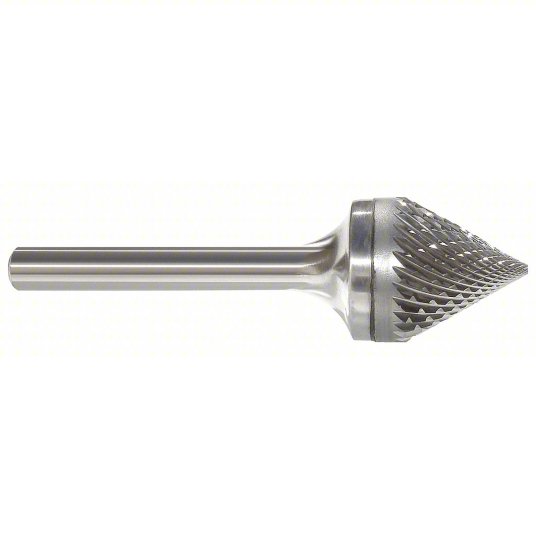
60-Degree (SJ) & 90-Degree (SK) Cone Burs
60-degree (SJ) and 90-degree (SK) cone burs have a short, cone-shaped cutting head with a sharp tip for deburring and finishing beveled and chamfered surfaces such as counterbored or countersunk holes. SJ burs have a cone angle for deburring 60-degree angled surfaces. SK burs have a cone angle for deburring 90-degree angled surfaces. These carbide burs remove sharp edges, unwanted projections, and excess material from machined workpieces.
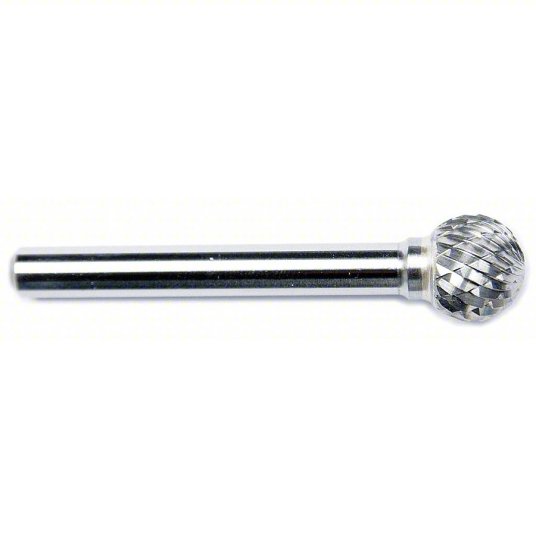
Ball Burs (SD)
SD ball burs have a spherical cutting head for deburring and finishing contoured surfaces and round openings. They can also be used to enlarge holes and shape bevels and other concave surfaces. These carbide burs remove sharp edges, unwanted projections, and excess material from machined workpieces.
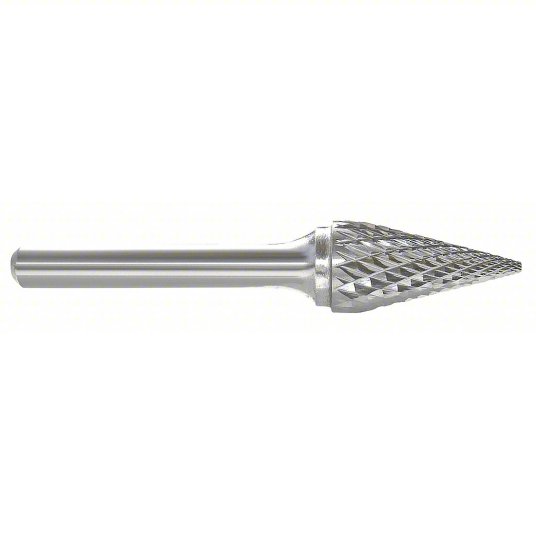
Cone Burs with Pointed End (SM)
SM cone burs have a long cone-shaped cutting head with a pointed end that fits into V-shaped slots, countersunk holes, and narrow or tapered openings such as gear teeth. They can access tight spots to debur without changing the shape of surfaces. These carbide burs remove sharp edges, unwanted projections, and excess material from machined workpieces.
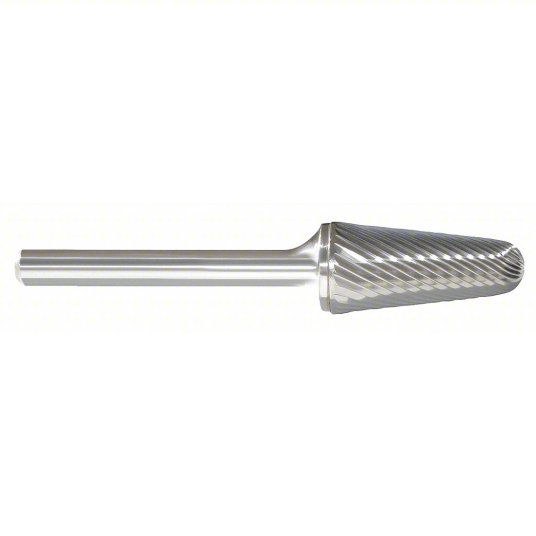
Cone Burs with Radius End (SL)
SL cone burs have a long cone-shaped cutting head with a radius end (rounded tip) for deburring and finishing tapered openings with a round bottom. Also called ball-nose cone burs, they fit into narrow angles and other tight spots to debur without changing the shape of surfaces. These carbide burs remove sharp edges, unwanted projections, and excess material from machined workpieces.
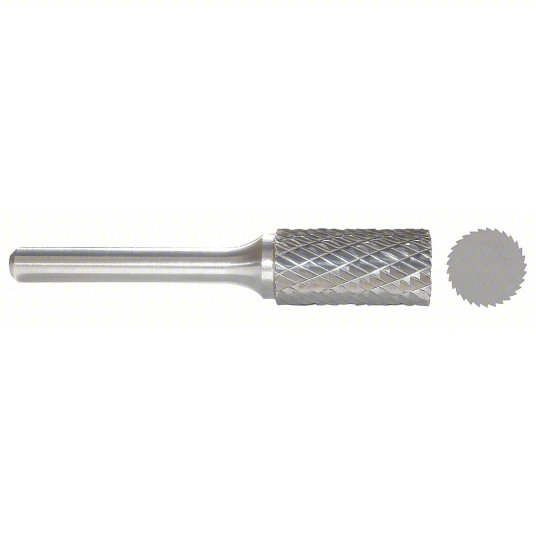
Cylinder Burs (SA)
SA cylinder burs have a barrel-shaped cutting head with a flat end, and they have flutes on their sides but not their end. They are use for deburring and finishing flat surfaces, interior contoured surfaces, and right-angled corners. Cylinder burs are the most common bur shape and are often used as an alternative to a file. These carbide burs remove sharp edges, unwanted projections, and excess material from machined workpieces.
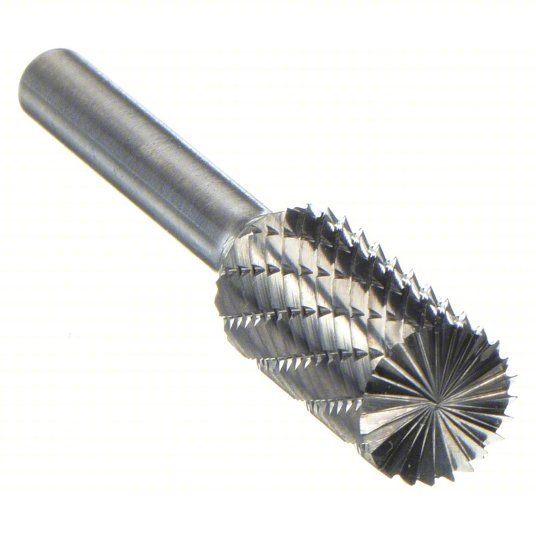
Cylinder Burs with Flat-End Cut (SB)
SB cylinder burs have a barrel-shaped cutting head with a flat end, and they have flutes on their sides and their end. They are used for deburring and finishing flat-bottomed slots and holes. Their cylindrical sides can also be used to remove material from contoured and flat surfaces. Cylinder burs are the most common bur shape. These carbide burs remove sharp edges, unwanted projections, and excess material from machined workpieces.
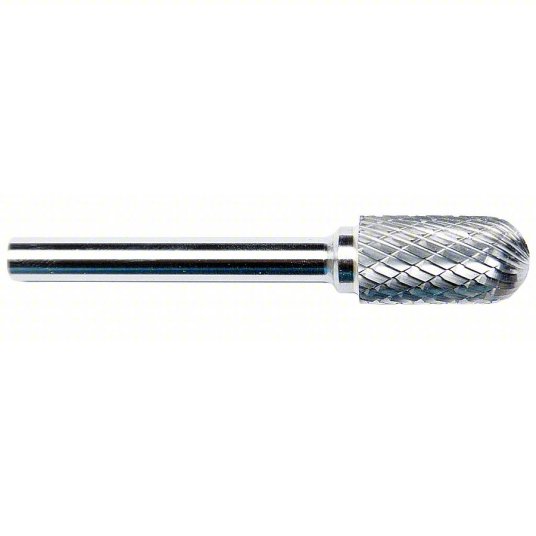
Cylinder Burs with Radius-End Cut (SC)
SC cylinder burs have a barrel-shaped cutting head with a radius end (rounded tip), and they have flutes on their sides and their end. They are used for deburring and finishing newly cut edges, recesses, contours, round-bottomed slots, and other curved surfaces. Also called round-head or ball-nose cylinder burs, they are sometimes used as an alternative to ball burs in shaping applications. Cylinder burs are the most common bur shape. These carbide burs remove sharp edges, unwanted projections, and excess material from machined workpieces.
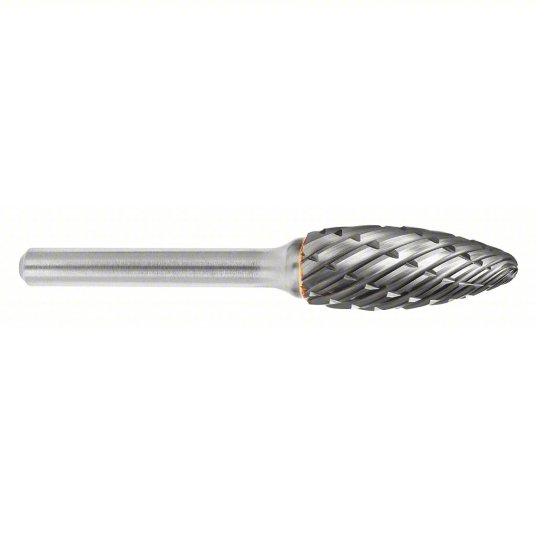
Flame Burs (SH)
SH flame burs have a tapered cutting head with sides that curve out from the rounded tip to access contoured holes and slots. They are used to debur, shape, and finish curved surfaces. These carbide burs remove sharp edges, unwanted projections, and excess material from machined workpieces. They attach to rotary power tools such as die grinders, high-speed engravers, and pendant drills.

Inverted Cone Burs (SN)
SN inverted cone burs have an upside-down cone-shaped cutting head that fits dovetailed and inverted slots and holes. They are used to debur and finish holes and make V-shaped cuts and rear-side chamfers. These carbide burs remove sharp edges, unwanted projections, and excess material from machined workpieces.

Oval or Egg Burs (SE)
SE oval burs have an egg-shaped cutting head for deburring and finishing contoured surfaces and long rounded holes and slots. These carbide burs remove sharp edges, unwanted projections, and excess material from machined workpieces.
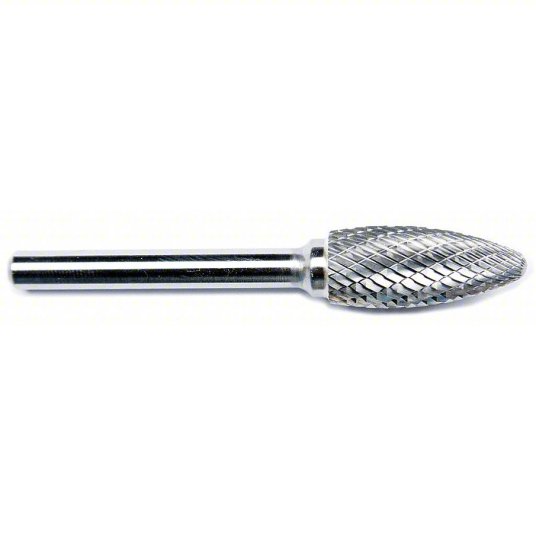
Tree Burs with Pointed End (SG)
SG tree burs have a tapered cutting head with slightly flared sides and a pointed tip for deburring and finishing curved holes, slots, and other openings with pointed bottoms. They are also used to debur the inside top walls of dies and forgings. These carbide burs remove sharp edges, unwanted projections, and excess material from machined workpieces.
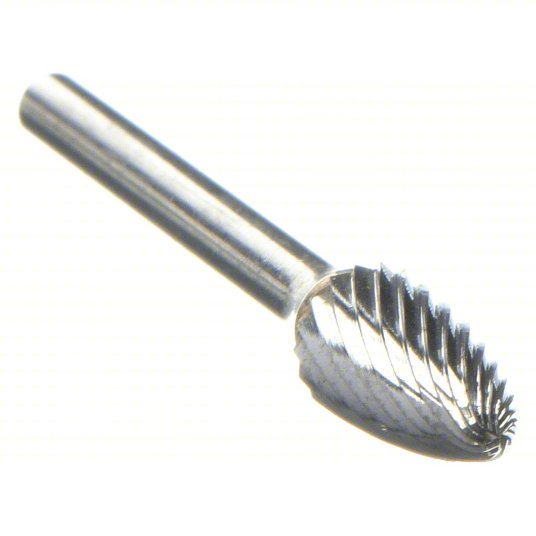
Tree Burs with Radius End (SF)
SF tree burs have a tapered cutting head with slightly flared sides and a radius end (rounded tip) for deburring and finishing curved surfaces, slots, and round-bottomed holes. Also called ball-nose tree burs, they are commonly used on castings, dies, and forgings. These carbide burs remove sharp edges, unwanted projections, and excess material from machined workpieces.